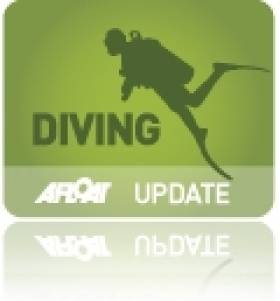Displaying items by tag: cave
Trapped Man Rescued from Sea Cave at Downpatrick Head in Co Mayo
The Irish Coast Guard Maritime Rescue Sub Centre (MRSC) at Malin Head has reported the safe rescue of the trapped man from the cave at Downpatrick Head Co Mayo.
The man has been transferred to Sligo University Hospital by the Coast Guard Helicopter Rescue 118 from Sligo and is said to be well and in good spirits.
As Afloat reported earlier, a multi-agency rescue operation had been awaiting low tide this afternoon (Sunday 18 September) to retrieve the man trapped in a sea cave at Downpatrick Head since the previous evening.
 Rescuers work to retrieve a man trapped in a cave at Downpatrick in County Mayo
Rescuers work to retrieve a man trapped in a cave at Downpatrick in County Mayo
According to The Irish Times, the man in his 40s had been exploring the cave with a woman on Saturday (17 September) when they became trapped by the rising tide and were swept off a ledge by a wave surge.
The Irish Cave Rescue Organisation rescued the individual, supported by the Coast Guard Units from Killala/Ballyglass/Killybegs/Achill, the Ballyglass RNLI Lifeboat, National Ambulance Service, Civil Defence, County Fire Service and An Gardai Siochana, including the Gardai Water Unit. With a particular mention of the support of the local community at Downpatrick and North Mayo more generally.
 The individual has been transferred to Sligo University Hospital by the Coast Guard Helicopter Rescue 118 from Sligo and is said to be well and in good spirits
The individual has been transferred to Sligo University Hospital by the Coast Guard Helicopter Rescue 118 from Sligo and is said to be well and in good spirits
In a statement, the Coast Guard said tonight it would like to take this opportunity to recognise the professionalism and dedication of those involved in the successful operation and in particular, the team from the Irish Cave Rescue Organisation.
Cave Divers Body Recovered from Galway Cave
Efforts Resume to Recover Body of Cave Diver
Efforts are resuming today to recover the body of a Polish man who died while cave diving near Gort in Co Galway.
The Irish Independent reports that Artur Kozlowski, 34, failed to emerge as expected from the flooded cave he was exploring solo on Monday afternoon.
His body was located yesterday evening by rescuers in the deepest section of the cave, 52m below the surface.

Cave Diver Artur Kozlowski
Kozlowski - known to friends as Artur Conrad - had been living in Ireland for several years and was regarded as one of Ireland's most experienced cave divers. He was previously highlighted on Afloat.ie for his lecture on cave diving at NUI Galway late last year.
He was also the holder of a number of diving records in the UK and Ireland, including longest and deepest traverse of a cave at 103m.
He had spent the last two years exploring the subterranean cave network in south Galway, and was on the final day of an expedition this week when tragedy struck.
Friend and diver Jim Warney, who found Kozlowski, said it took an hour to locate the body in a narrow passage. His oxygen tanks - which were known to have enough air for at least six hours - and a guide rope were still attached.
Rescuers have requested assistance from a UK dive rescue team to help recover the body.
The Irish Independent has more on the story HERE.
Search to Resume for Missing Cave Diver
The search will resume today for a Polish diver reported missing yesterday near Gort in Co Galway.
The Irish Times reports that the man, believed to be in his 30s, was exploring a cave in the area solo yesterday afternoon, but failed to emerge as expected in the evening.
The Irish Coast Guard said the man is known to be a very experienced spelunker, but that he only had enough oxygen to last six hours.
A search was conducted last night in the by a friend of the man and another experienced diver which turned up nothing.
The flooded cave is estimated to be 52m deep, of the kind suitable for experienced divers only.
Afloat.ie will update with more information as soon as it arises.
Kozlowsk Lecture on Cave Diving in Ireland
Of all aspects of scuba diving, the discipline with the highest mortality rate is cave diving writes Timmy Carey. A myriad of things can go wrong, a diver can get lost, run out of air and even worse, carried out in complete darkness if the diver loses their lights. On Friday, the 3rd of December N.U.I.G G.M.I.T Sub Aqua club will be hosting a free lecture on cave diving. The lecture will be presented by Artur Kozlowski and has made a large number of caving breakthroughs in Irish cave systems.
In 2008 he broke the British and Irish depth record in a cave at 103 meters and the lecture promises to be very interesting. The venue is D'arcy Thompson (on the main concourse) in N.U.I Galway.


































































